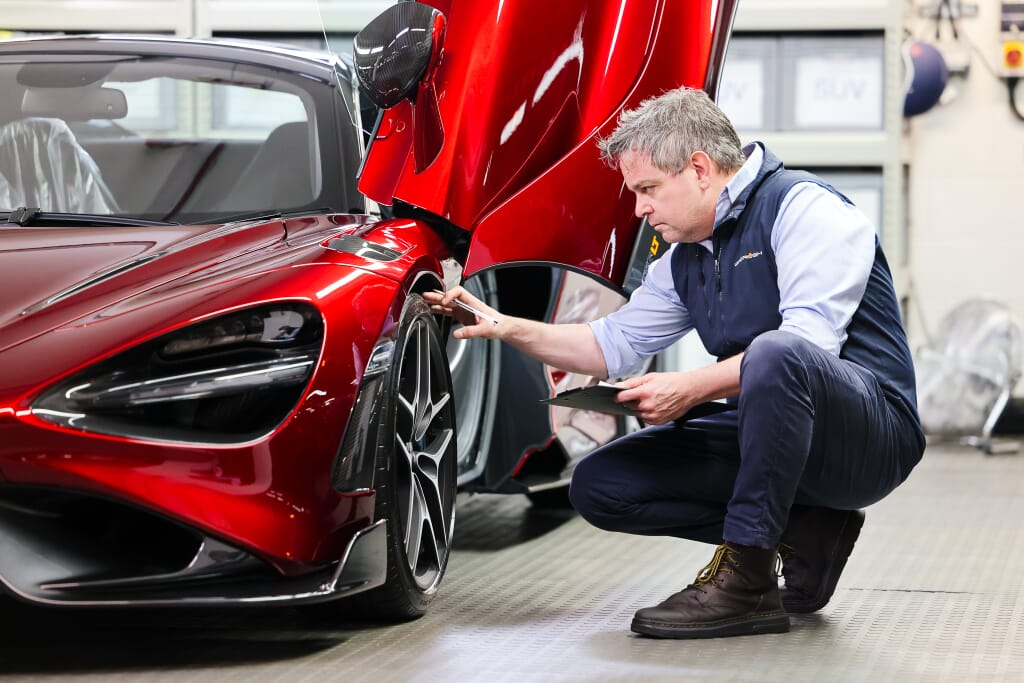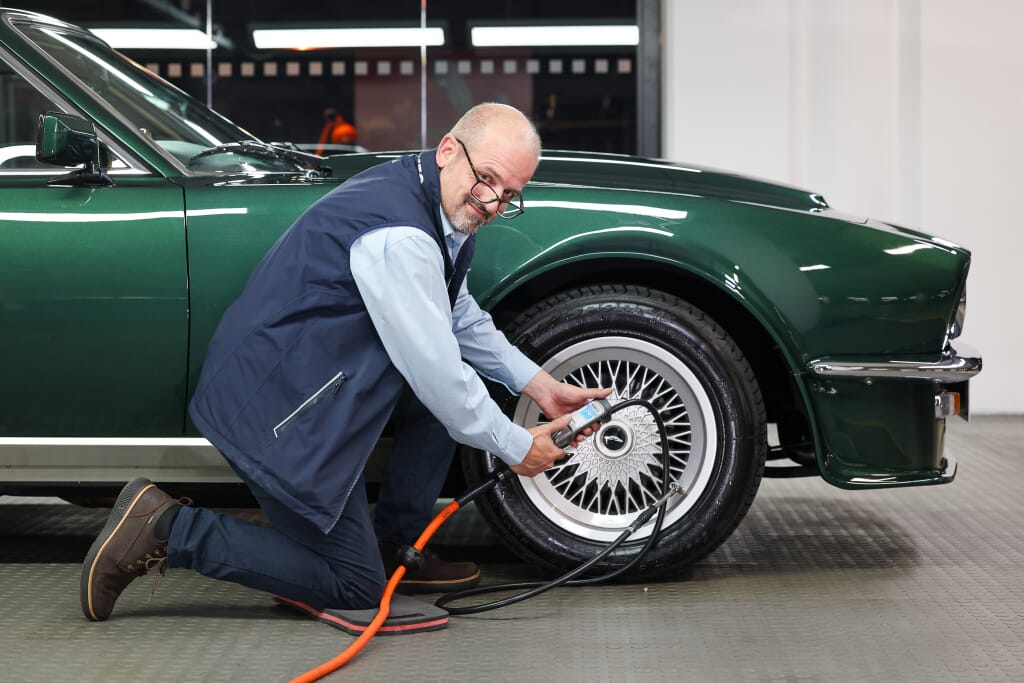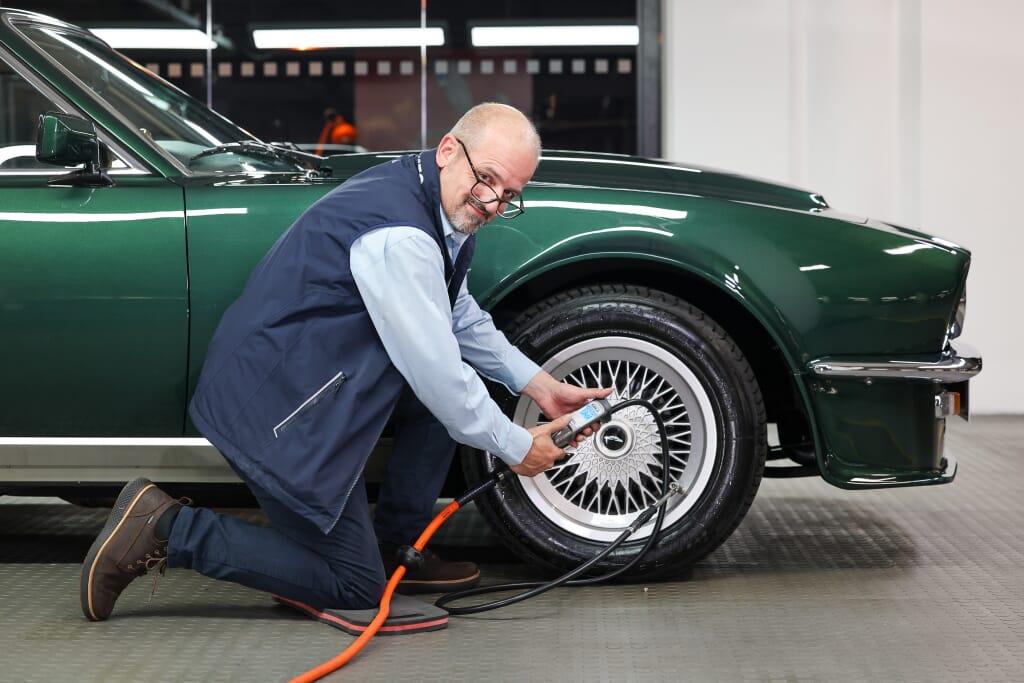
As the driving season winds down and winter approaches, car owners face an important decision: how best to protect their prized vehicles during the cold, harsh months ahead. Whether you’re storing a classic car, supercar, or cherished daily driver, proper winter storage can mean the difference between finding your vehicle in pristine condition come spring or facing costly repairs and deterioration.
At Windrush Car Storage, we’ve spent two decades perfecting the art of vehicle preservation. Here’s our comprehensive guide to winter car storage – covering both at-home solutions and what to look for in a professional storage service.
The essential pre-storage checklist

Before your car settles in for its winter rest, these preparatory steps are crucial:
1 – Give your vehicle a thorough clean
A comprehensive wash and dry isn’t just about aesthetics. Winter brings contaminants—road salt, mud, and grime—that can cause lasting damage to your vehicle’s finish if left unchecked. Pay particular attention to the wheelarches and undercarriage, where debris tends to accumulate.
For alloy wheels, use a jet wash to remove any salt residue that could cause corrosion during storage. Follow up with a complete dry using microfiber cloths, then apply two coats of quality wax to protect the paintwork. Don’t forget the interior—a thorough vacuum prevents musty odors and deters pests.
2 – Check and change your fluids
Pop the bonnet and inspect your oil using the dipstick. If it’s dark enough that you can’t see the metal through the liquid, schedule an oil change before storage. Old, contaminated oil can become acidic and damage engine components over time.
Fill your tank with high-octane fuel to prevent degradation, and add a quality fuel stabiliser to keep the fuel system healthy. Finally, ensure your antifreeze is topped up to protect against freezing temperatures, even in storage.
3 – Address your tyres properly
Flat spots are one of the most common storage-related issues, announced by an unsettling vibration when you take your first spring drive. To prevent this, increase tyre pressure to approximately 50 PSI—this overinflation compensates for natural air loss during storage.
Apply tyre preserver to the sidewalls to prevent perishing and cracking. While you don’t need to remove the tyres entirely, if you’re storing for an extended period, consider using tyre cradles or moving the vehicle periodically.
4 – Protect your battery
A battery sitting idle for months will gradually discharge and deteriorate. For at-home storage, invest in a quality battery conditioner (also called a trickle charger). Unlike standard chargers, conditioners monitor battery health and maintain optimal charge levels without the risk of overcharging.
Alternatively, you can disconnect the battery entirely, though this means resetting various vehicle settings when you reconnect it in spring.
5 – Maintain your car’s systems
Before storage, run your air conditioning for 10-15 minutes to keep the system lubricated and prevent seals from drying out. Top up washer fluid for both windscreen and headlights, ensuring you choose a formula that won’t freeze in the system.
Check wiper blades and replace them if they’re worn—winter weather is hard on rubber, and you don’t want damaged blades scratching your windscreen.
At-home storage: Making it work

If you’re storing your vehicle at home, location and protection are paramount:
1 – Choose the right space
A heated, dehumidified garage is ideal, but few of us have access to such luxury. At minimum, your storage space should be:
- Dry and well-ventilated to prevent condensation and mold
- Secure with robust locks and ideally an alarm system
- Free from rodents and pests that might damage wiring or upholstery
- Large enough that the car isn’t cramped against walls or other items
2 – Use a quality car cover
Select a breathable, multi-layer car cover specifically designed for indoor use. Avoid plastic tarps or non-breathable materials that trap moisture and cause condensation. The cover should fit snugly without being tight enough to damage paintwork.
3 – Consider the environment
Even in storage, your car faces threats from temperature fluctuations, humidity, and pests. Place moisture absorbers around the vehicle to combat dampness. Some owners place dryer sheets in the interior and engine bay to deter rodents, though professional pest control measures may be necessary for problem areas.
The professional storage advantage

While at-home storage can work, professional car storage facilities offer significant advantages – particularly for high-value or classic vehicles.
What to look for in a professional service
Not all storage facilities are created equal. When evaluating options, consider:
Climate Control: Dehumidified, temperature-controlled environments prevent the condensation and humidity that cause rust, mold, and deterioration. This is particularly crucial for classic cars with older seals and materials.
Security: Look for facilities with 24/7 surveillance, secure access control, and professional staff who understand vehicle security. Your car should be in an individual bay, not accessible to other clients.
Active maintenance: The best facilities don’t just store your car—they care for it. Regular checks, battery conditioning, tyre pressure monitoring, and fluid inspections ensure your vehicle stays in optimal condition.
Professional expertise: Staff should understand the specific needs of different vehicles, from modern supercars to vintage classics requiring specialized care.
The Windrush Approach

At Windrush, we’ve developed what we call “The Windrush Way”—an industry-leading approach that goes well beyond simple storage. When you entrust your vehicle to us, you benefit from:
- Comprehensive induction: A thorough twelve-step process ensures every aspect of your vehicle is documented and optimized before storage
- Climate-controlled environment: Individual dehumidified bays maintain ideal conditions year-round
- Active care: regular visual checks, weekly battery and drip tray inspections, and expert maintenance reviews every 60 days
- Professional services: Optional washing, valeting, and detailing services ensure your car looks its best
- Complete transparency: We keep you informed and connected through email and WhatsApp updates
Our locations in the Cotswolds and Central London offer convenient access whilst providing the security and environmental control your vehicle deserves.
Common winter storage mistakes to avoid

Even with the best intentions, these errors can compromise your storage efforts:
- Engaging the handbrake: On older vehicles, brake pads can seize to discs. Use wheel chocks instead
- Leaving the fuel tank nearly empty: A full tank prevents condensation and fuel system issues
- Forgetting about insurance: Ensure your policy covers storage, and consider specialized storage insurance for valuable vehicles
- Neglecting pest prevention: Rodents can cause thousands in damage to wiring and upholstery
- Using cheap or inappropriate covers: Poor-quality covers can trap moisture or damage paintwork
Making the right choice

Whether you choose at-home or professional storage depends on several factors: your vehicle’s value, your available space, the quality of your home storage environment, and your budget. For many owners of classic, rare, or high-value vehicles, professional storage offers peace of mind that’s worth the investment.
The key is preparation. Whether your car spends winter in your garage or in our care at Windrush, proper preparation ensures it emerges in spring exactly as it went in—ready for another season of driving pleasure.
At Windrush Car Storage, we’ve been trusted by collectors, investors, and enthusiasts for 20 years. Our facilities in the Cotswolds and Central London represent the highest standard in secure car storage and care.
If you’d like to discuss how we can help protect your vehicle this winter, we’d love to hear from you. Visit our website at windrushcarstorage.co.uk or contact us at info@windrushcarstorage.co.uk.




